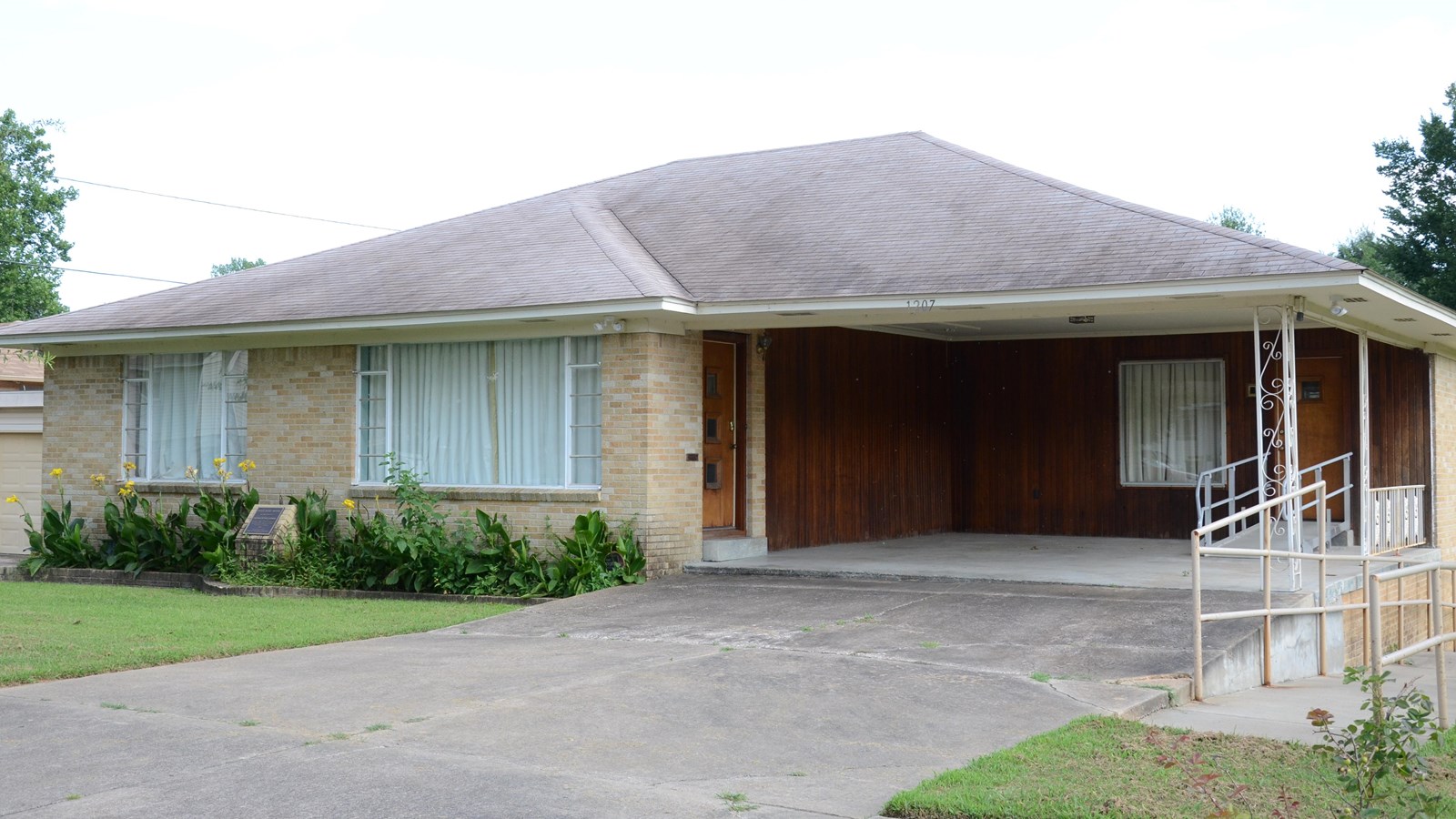May 20, 2021
Jackson, Mississippi
Visit to Medgar and Myrlie Evers' Home
My grandpa used to smoke his pipe out there after dinner, sitting on the low wall, with his foot up on the milking stool. I loved the smell of the pipe smoke, the warmth of the summer evening, and the fireflies. It's different than hanging out in the driveway, which would be weird. For many people, it's like an outdoor living room. The acoustics are different, and you can stand out there during a belligerent midwestern rainstorm and feel safe from potential danger. This is how one should feel in their own home, or that of a beloved family member, right?
Daisy Gatson Bates' Little Rock home had a carport, too. At her home, she received bullets in the mail, harassing phone calls, and white supremacists regularly threw rocks through her windows. When she was a young child, her mother was raped and killed by three white men. Home wasn't a safe place for Mrs. Bates or her mother, Millie Riley. Mrs. Bates was the President of the Arkansas NAACP, and critical support to the Little Rock Nine.
When I stood in Medgar and Myrlie Evers' carport this evening, I felt a similar serenity, coziness, and shielded safety that I had felt in my grandparents' carport. The Evers' carport had muffled acoustics, too. The neighborhood was quiet. Yet the Evers family didn't feel safe and in fact weren't safe in their home. Mr. Evers insisted that the children's mattresses be placed directly on the floor so that they were less likely to be hit if someone shot at the house. He did drills with them to prepare them for shootings or bombings.
Medgar Evers was the NAACP's first field secretary. He was shot to death in his carport on June 12, 1963. He was initially refused medical attention at the hospital, which was for whites only. He was buried in Arlington National Cemetery. He was a 37 year old father of three.
More Resources
Mound Bayou, Mississippi--An independent Black community formed by Isaiah Montgomery and others in 1887. Medgar Evers lived in Mound Bayou after college and sold insurance there.
Books
Three Years in Mississippi, James Meredith. The story of James Meredith attempting to enroll in the University of Mississippi, originally published in 1966, this is the first reprinting of this book. I picked this up at the Mississippi Civil Rights Museum.
Mississippi: The Long Hot Summer, William McCord. McCord was a sociologist at Stanford, which was one of the recruiting sites for participants in the Freedom Summer. He attended direct-action events and was intent on capturing the depth of oppression and violence that Black Mississippians were experiencing. I bought this one too!
Please buy through Uncle Bobbie's Books or directly via the linked titles above.





No comments:
Post a Comment
don't be a robot